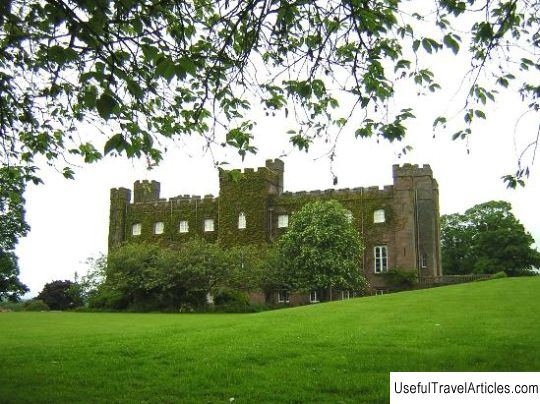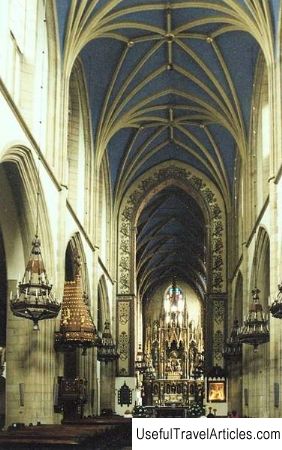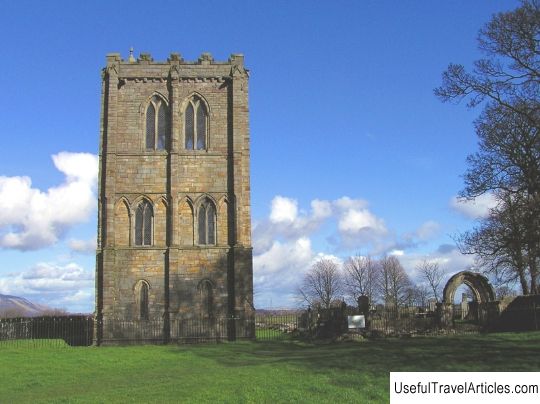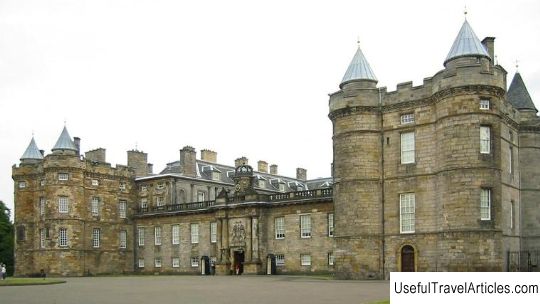Scone Abbey and Scone Palace description and photos - Great Britain: Scotland
Rating: 8,4/10 (8603 votes) 
Scone Abbey and Scone Palace description and photos - Great Britain: Scotland. Detailed information about the attraction. Description, photographs and a map showing the nearest significant objects. The title in English is Scone Abbey and Scone Palace. Photo and descriptionSkoon Abbey is located near the city of Perth in Scotland. It was founded by Augustinian monks at the beginning of the 12th century, according to various sources, between 1114 and 1122. In the reign of King Malcolm IV, the importance of the abbey increases. It acquires royal status. Here is kept the coronation stone of the Scottish kings (Skunk stone), it becomes one of the main royal residences. The relics of St. Fergus are also kept here, which attracts many pilgrims to the abbey. The few surviving images and archaeological evidence suggest that the abbey was built in the Romanesque style, with a central tower surmounted by a high spire. However, over time, the abbey loses its significance, especially after how the English king Edward I took the Stone of Destiny to England, to Westminster Abbey. After the Scottish Reformation, abbeys in Scotland were abolished altogether. Skunk Abbey was ravaged in 1559, and its lands were then transferred to private ownership. On the site of the ruined abbey in the 16th century, a palace was built, which was almost completely rebuilt in 1808 and is now a magnificent example of Georgian architecture. The palace and the palace park are now open to the public. Fine collections of furniture, ceramics, ivory carvings, Dresden and Sevres porcelain are exhibited in the state rooms of the palace. A copy of the Skunsky stone is installed on a hill in the park. There are many legends about the origin of the Skunsky stone. In some, he is described as "Jacob's pillow" - having fallen asleep on this rock, Jacob saw in a dream a staircase to heaven. There is a legend that this stone was brought to Ireland by the Egyptian princess Scott. The most reliable is that Fergus, the first king of Scotland, brought the stone, and possibly the throne, from Ireland to Scotland. All the rulers of Scotland were crowned on this stone, until in 1296 the English king Edward I took the stone to London and placed it in the base of a wooden throne. The throne was in Westminster Abbey, and since then all the kings of England and Great Britain have been crowned on it. However, there is a legend that the monks drowned the real Stone of Destiny in the River Thay, and Edward took only a copy to England. And although under the terms of the Treaty of Northampton in 1328, the Stone of Destiny was to be returned to Scotland, it returned there only many centuries later. On the day of St. Andrew, On November 30, 1996, the stone was solemnly brought to Scotland and placed in Edinburgh Castle along with the coronation regalia of Scotland. The Queen's representative at this celebration was her son Prince Andrew.      We also recommend reading Nikolo-Innokentievskaya church description and photos - Russia - Siberia: Irkutsk Topic: Scone Abbey and Scone Palace description and photos - Great Britain: Scotland. |




